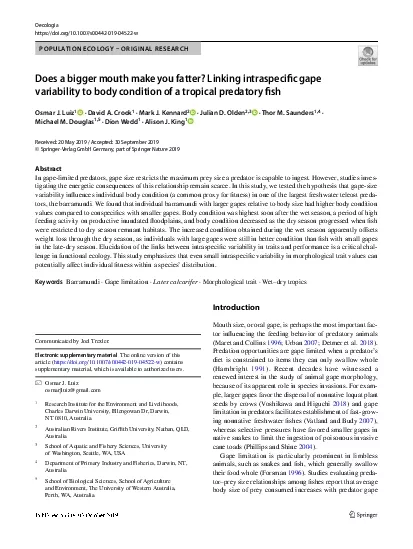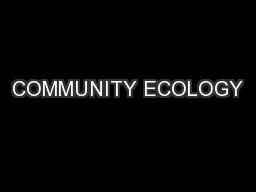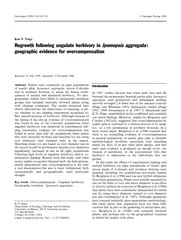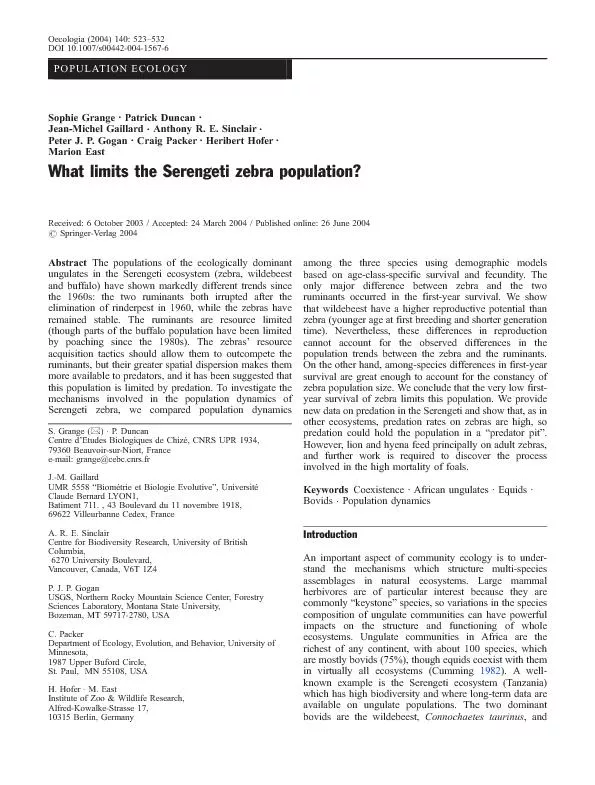PDF-Oecologia httpsdoiorg101007s0044201904522w
Author : priscilla | Published Date : 2021-08-15
POPULATION ECOLOGY ORIGINAL RESEARCHDoes abigger mouth make you fatter Linking intraspecic gape variability tobody condition ofatropical predatory shOsmarJLuiz DavidACrook
Presentation Embed Code
Download Presentation
Download Presentation The PPT/PDF document "Oecologia httpsdoiorg101007s004420190452..." is the property of its rightful owner. Permission is granted to download and print the materials on this website for personal, non-commercial use only, and to display it on your personal computer provided you do not modify the materials and that you retain all copyright notices contained in the materials. By downloading content from our website, you accept the terms of this agreement.
Oecologia httpsdoiorg101007s0044201904522w: Transcript
Download Rules Of Document
"Oecologia httpsdoiorg101007s0044201904522w"The content belongs to its owner. You may download and print it for personal use, without modification, and keep all copyright notices. By downloading, you agree to these terms.
Related Documents




